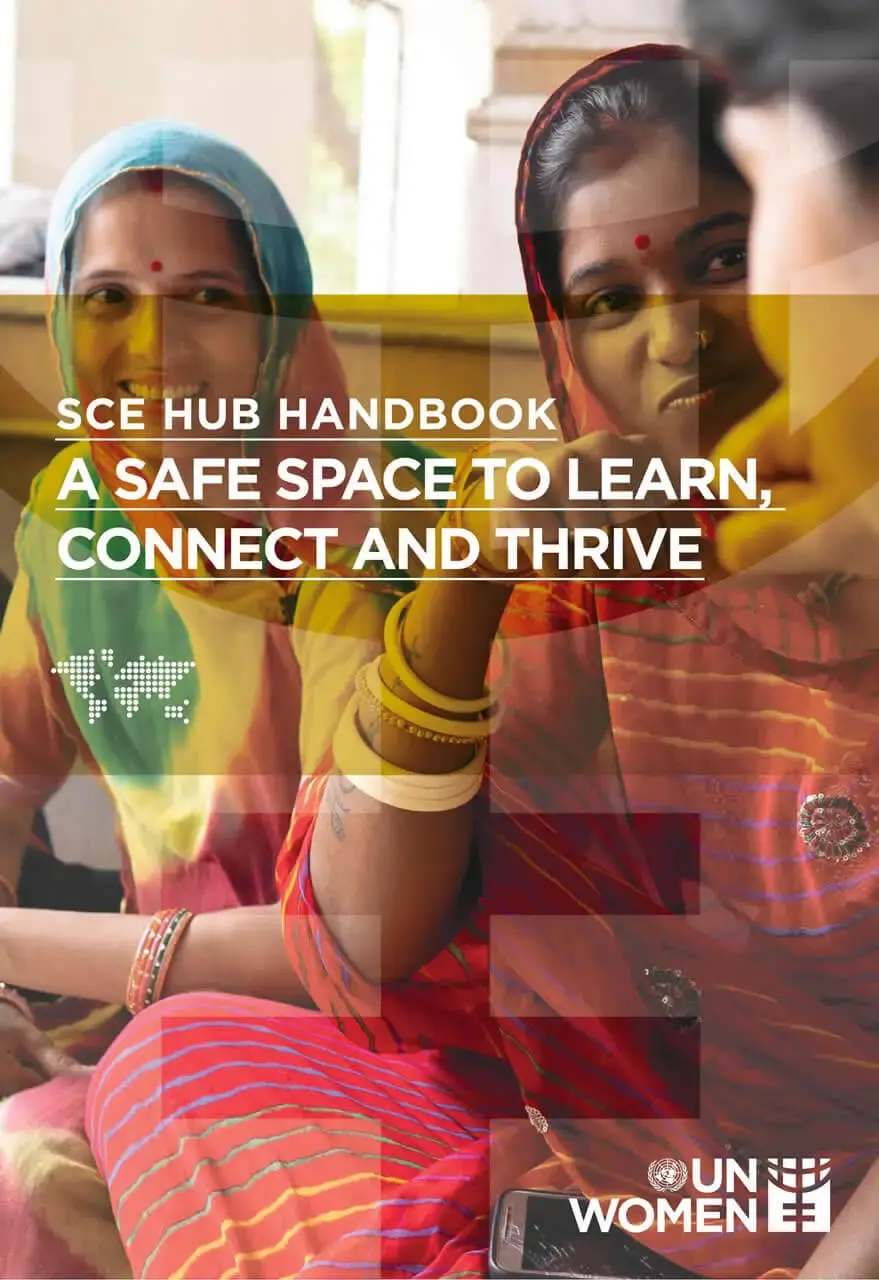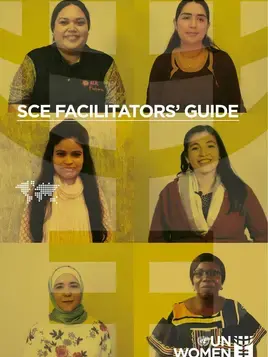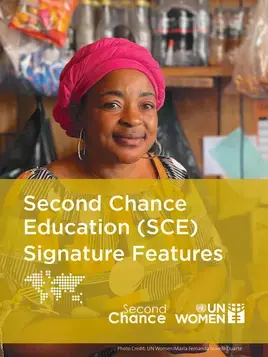
Second Chance Education hub handbook: A safe space to learn, connect and thrive
UN Women’s Second Chance Education (SCE) Programme provides women who have been affected by humanitarian crisis, poverty, or harmful social norms with a second chance to access learning and training opportunities and fulfil their personal and economic aspirations. The SCE pilot programme (2018–2023) was implemented in six countries in three contexts:
- humanitarian crisis (Cameroon and Jordan),
- middle income (Chile, India, and Mexico),
- and high income (Australia).
SCE hubs are the physical spaces where women who are part of the SCE programme participate in in-person learning activities. Depending on locale, they may be called Women’s Centres, Women’s Empowerment Centres, Learning Centres, Oasis Centres, or other context-specific forms.
This handbook provides guidance on the most important areas of work that are required to run an SCE learning hub and highlights the specific approaches followed by diverse partners or responsible parties and the characteristics that make their learning hubs unique. Some of the key areas covered by this handbook include:
- location of the hubs,
- the equipment needed to carry out programme activities,
- the staff roles that are required to operate the hubs,
- and the typical areas that hubs are composed of in connection to the learning and training opportunities offered.
A series of virtual hub tours underpin this publication and are referenced across the document to allow readers to fully immerse themselves in the diverse SCE contexts and be “toured” around the hubs, listening first-hand from the individuals/teams running the hubs.


